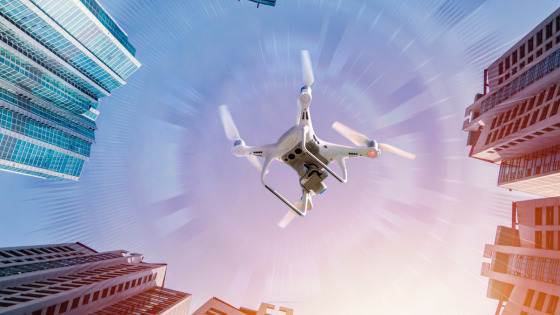The world in which we live gets more technologically advanced every day and things that were previously accessible to only a select few have now become available to pretty much everyone. During the 1980’s when personal computers were the newest thing, the desktop devices were much more expensive (not to mention cumbersome) than they are today.
Thirty plus years later, personal computers are commonplace in homes around the industrialized world and everything on the internet is now available anywhere at anytime thanks to a large variety of handheld mobile electronic devices, including cell phones, laptops and tablets.
Another electronic device that is quickly changing the way we live and work is the drone that began as a hobby for flying enthusiasts or expensive gifts to kids from parents who could afford them. Today multiple companies are manufacturing affordable drones which have made them more popular and the devices are quickly becoming mainstream business tools.
Multiple government agencies and a variety of businesses are now using drones to assist in accomplishing their goals which include photography, news media, farming, law enforcement, shipping and more uses for drones are always being found.
Both UPS and Amazon plan to start delivering packages using drones instead of the typical mail transporting services. When that becomes reality you will have to worry about your package even making it to your doorstep to be stolen by someone watching for package deliveries because hackers will be able to gain control of drones in-flight and redirect them to another location.
As we have seen in the past any type of electronic device that gets connected to a network becomes a potential target for hacking. These nefarious efforts are made easier by devices that have little or no security measures in place and are easy to set up facilitated by using open ports and unencrypted communications.
A recent example sparked anxiety in the up-and-coming drone industry when a drone was found outfitted with hacking capabilities that would allow it to hack into local wireless networks after landing on roofs of businesses, homes or government facilities.
DefCon demonstrated in 2015 that someone could very easily take control of a drone while in flight. Since shipping drones will likely be launched each time from a specific location, it won’t take long for hackers to determine flight patterns and easily assume control of regularly flying drones and their cargo.
The logistical nightmare created by dronejacking for companies like Amazon and UPS could negatively impact the success of such programs even though successful dronejackings would be unreliable and package contents are unknown.
Drones have also been known to annoy people when they fly over their houses and many have resorted to throwing rocks or shooting guns to bring them down. This presents questions about invasions into personal space and “no-fly zones,” which are just a few of the issues currently being considered by national and local authorities. Ordinances and regulations about drones are still being formulated so many agencies don’t know how to handle drone complaints.
The media and photography enthusiasts use drones to get pictures that are not easily accessed otherwise using expensive high-quality photographic equipment. Hackers could easily assume control of not only the expensive drone, but the costly equipment it carries which creates a tempting target for dronejacking by those who resell various devices including drones and camera equipment.
Multiple federal, state and local law enforcement agencies use drones for surveillance and to assist with crowd control in highly charged scenarios like protests and situations involving active shooters. Protesters could look to technology to take out surveillance drones and security feeds upon which law enforcement agencies rely.
Researchers have found open ports and weak authentication tools in many drones used for consumer shipping which allows hackers to send remote commands to drones to redirect them. Most of these redirections are currently being done manually but it won’t be long before someone produces a format that makes exploitation easier.
Most vulnerabilities are easily remedied with a software update from the drone manufacturer and those who manufacture more expensive high-end drones will probably offer fixes sooner than cheaper drones for which fixes will be a long time coming.
Cybersecurity experts predict that drone exploit kits will soon start making the rounds on the internet and more media stories about dronejackings will appear in newscasts worldwide. Questions about personal no-fly zones will abound and debates on social media will be heated about solutions that may include running software from a laptop instead of hurling rocks and loading weapons.
Experts also predict drones will be taken out of the air by individuals using directional antennas and that hackers will develop a way to quickly eliminate surveillance drones used by law enforcement.
Commercial aviation grew slowly over a long period of time as did rules and regulations governing it. Drones are advancing at a much more rapid pace which is leaving the United States Federal Aviation Administration scrambling to formulate regulations governing where and when both private and commercial drones can fly and local authorities are awaiting those rules and regulations, as are individuals who operate or are affected by drones.

